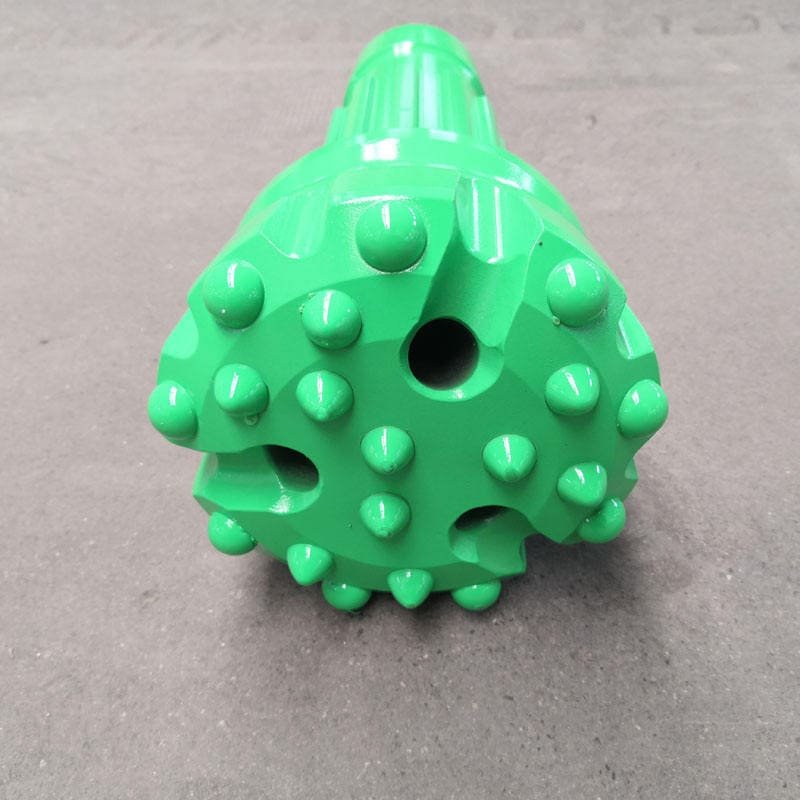Ever wondered what keeps your drilling operations smooth and trouble-free?
Impact testing is crucial for ensuring DTH drill bits can withstand the intense forces they face during drilling. This testing process verifies that the bits can endure repeated high-frequency impacts, which helps assess performance, predict durability, and enhance safety.
I remember the first time I realized the importance of impact testing. It was during a project where a seemingly minor oversight led to significant downtime. That experience taught me that impact testing is more than just a technical requirement—it's a safeguard for efficiency and reliability. It influences design improvements, helps in choosing the right materials, and ensures our operations remain safe and efficient. Understanding these factors has become integral to how I approach purchasing decisions and manage strategies.
Impact testing ensures DTH bits withstand drilling forces.True
Impact testing evaluates DTH bits' durability against high-frequency impacts.
Impact testing is irrelevant to DTH drill bit design optimization.False
Impact testing informs design improvements for enhanced performance and safety.
How does impact testing improve DTH bit performance?
Impact testing might sound technical, but it's crucial for making sure your DTH bits can handle the tough stuff without breaking down. Let's dive into how this testing makes your drilling equipment more reliable.
Impact testing enhances DTH bit performance by ensuring they can withstand high-frequency impacts, predicting durability, refining design, and confirming material suitability for tough drilling conditions.
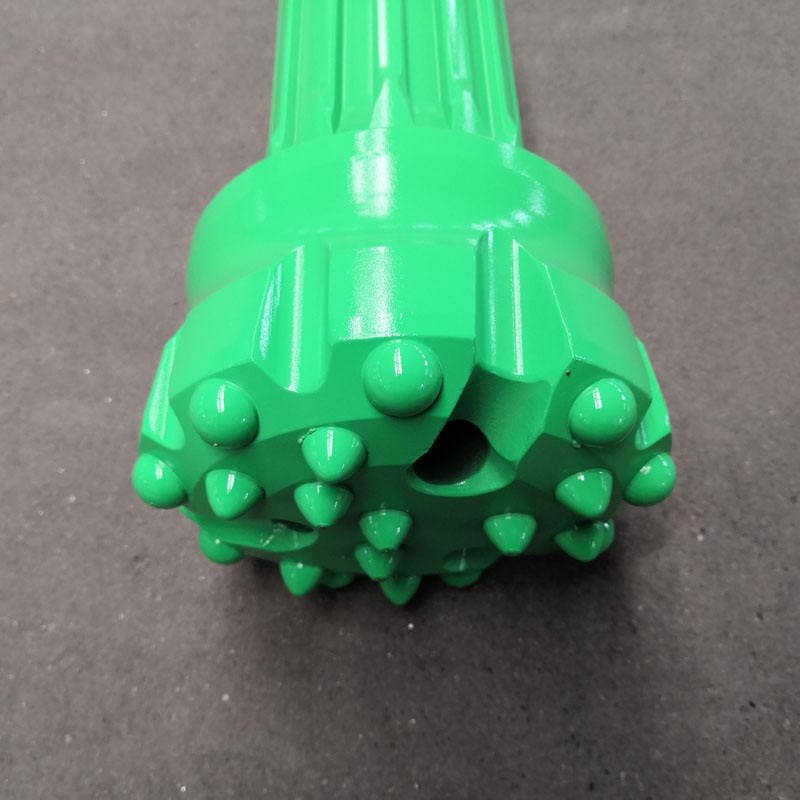
The Role of Impact Testing in Performance Verification
I remember the first time I saw a DTH bit in action—it was like watching a heavyweight champion go to work on rock formations. Impact testing plays a huge role in making sure these bits can handle the pressure. By simulating real drilling conditions, we ensure that each bit meets the high standards needed for effective rock penetration. When you're out there in the field, the last thing you want is a tool that can't keep up.
Enhancing Durability Through Testing
Durability is king when it comes to DTH bits. Imagine setting up for a big project only to have your equipment give out halfway through. Impact testing helps predict how long a bit will last, giving you peace of mind that premature failures won't derail your operation. With impact-tested bits, you can look forward to fewer replacements and more time focusing on the task at hand rather than costly downtimes.
For businesses relying on reliable equipment1, investing in impact-tested DTH bits translates to fewer replacements and enhanced operational continuity.
Design Optimization with Impact Data
Ever wondered how engineers come up with those sleek, efficient designs for drill bits? It's all about the data from impact tests. These tests show us how forces are distributed across a bit's surface, which in turn guides design improvements like button placement and bit shape. I've seen firsthand how these tweaks can lead to better performance in varying conditions, making those long hours of testing truly worthwhile.
A table comparing pre- and post-test designs can illustrate potential improvements:
| Design Aspect | Pre-Test Observation | Post-Test Improvement |
|---|---|---|
| Button Placement | Uneven wear patterns | Optimized distribution |
| Bit Shape | Inconsistent penetration | Enhanced cutting angles |
Evaluating Material Suitability
If you've ever held a piece of tungsten carbide, you know it's as tough as nails. But in the world of drilling, even the toughest materials need to be tested. Impact tests help verify that materials like tungsten carbide and hardened steel can endure high-stress conditions. Choosing the right material means less frequent replacements and more cost-effective operations.
Operational Safety Considerations
Safety is non-negotiable in drilling operations, and impact testing is our ally here. By identifying potential weaknesses before they become real problems, manufacturers can ensure safer, more reliable bits. This proactive approach means fewer risks and more secure drilling operations.
For more insights on improving drilling safety2, exploring recent studies on material performance and design innovations can be beneficial.
Predicting Performance in Geological Conditions
Finally, knowing how a bit will perform in different geological settings is like having a secret weapon. Impact tests give us the ability to predict performance, helping operators choose the right bit for their project. This not only optimizes resource use but also leads to better drilling outcomes.
Understanding these nuances can inform smarter purchasing decisions, enhancing overall project efficiency.
For further reading on matching bits to geological demands3, consider exploring technical guides or case studies on successful applications.
Impact testing predicts DTH bit durability.True
Impact testing evaluates bit longevity by assessing resistance to repeated impacts.
DTH bits require no material testing for performance.False
Material testing ensures bits withstand stress, crucial for performance.
How Does Impact Testing Help Predict Durability?
Ever wondered how products endure life's unexpected knocks? Impact testing holds the key.
Impact testing assesses a material's durability by evaluating its toughness and energy absorption during sudden force applications. This helps manufacturers predict product longevity and improve safety and design.
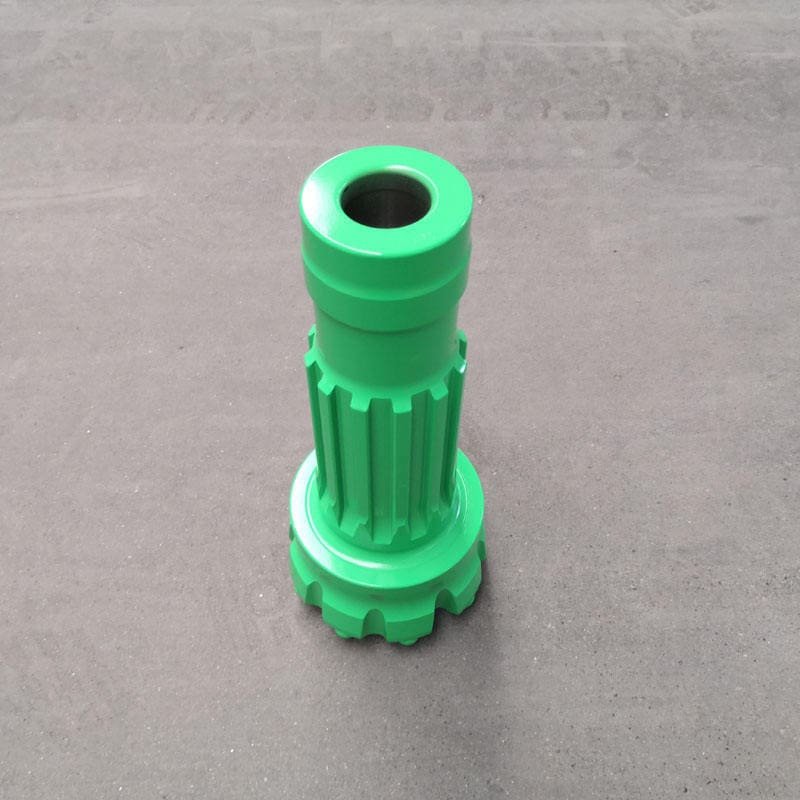
Understanding Impact Testing
Imagine buying a new gadget, only to have it break after a minor fall. Frustrating, right? That's where impact testing comes in! It’s like taking your materials through a mini obstacle course to see how they hold up under pressure. By applying sudden, high-energy forces, we can gauge just how tough a material really is. These tests reveal how much energy a material can take before it calls it quits, giving us a sneak peek into its toughness4. The Charpy and Izod tests are the stars here, each offering a unique perspective on material resilience.
Charpy vs. Izod Tests
Now, think of these tests as two different workout routines for your materials. The Charpy test has the specimen lying horizontally, while the Izod test stands it up vertically. Both are crucial in material science, helping us understand how orientation impacts durability.
| Test Type | Specimen Position | Energy Measurement |
|---|---|---|
| Charpy | Horizontal | Impact from behind |
| Izod | Vertical | Impact from front |
These methods give us insights into how different alignments affect a material’s ability to withstand impacts.
Applications Across Industries
Impact testing isn't just for show; it’s vital across sectors like automotive and aerospace. Take the automotive industry5 for example—understanding material behavior during crashes is crucial for designing safe vehicles. Similarly, in construction, ensuring materials can handle unexpected forces helps prevent catastrophic failures.
Material Selection and Design Improvement
By predicting material reactions to impacts, we can make smarter choices in design and material selection. This means not just crafting durable products but safe ones too. Engineers utilize impact data to refine product designs6, enhancing their stress-handling capabilities.
Predicting Product Longevity
With insights from impact testing, companies can forecast how long their products will last. Understanding material limits allows us to anticipate failure points and minimize risks, ensuring products meet safety standards and customer expectations.
Ultimately, these tests empower engineers to tweak material compositions and structures for better durability in challenging environments, boosting the reliability and durability7 of products we rely on every day.
Charpy test measures impact from behind.True
The Charpy test involves a horizontal specimen impacted from behind.
Izod test is used for horizontal specimens.False
The Izod test uses a vertical specimen, not horizontal.
How does impact testing influence design optimization?
Ever wondered how your favorite gadgets withstand the bumps and bruises of everyday life? Impact testing is the secret sauce!
Impact testing shapes design optimization by delivering essential insights that empower engineers to perfect material choices and structural components. This process ensures products achieve top-tier safety and efficiency, resulting in designs that stand the test of time.
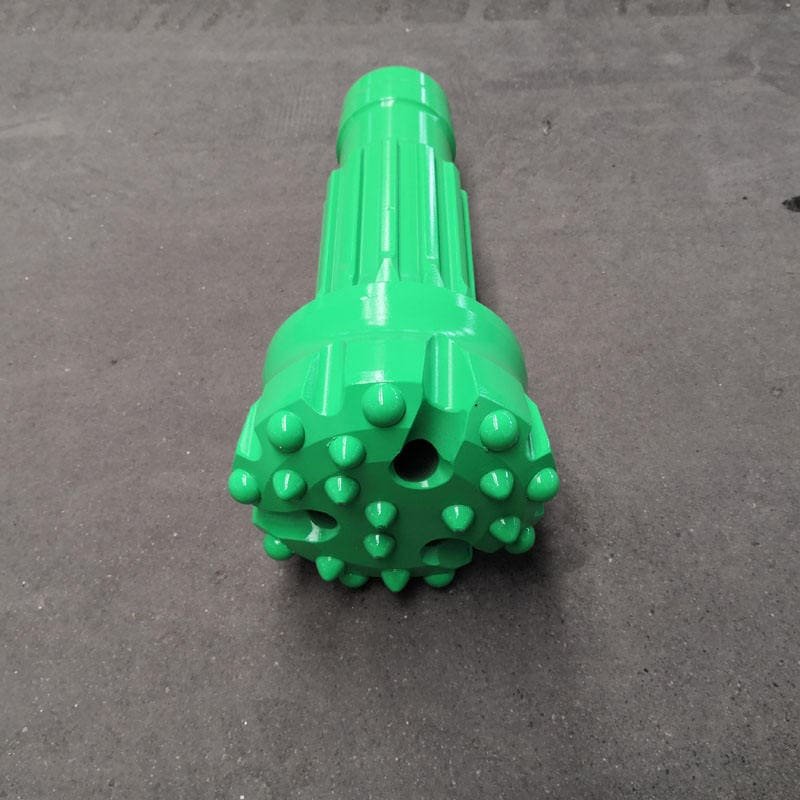
The Role of Impact Testing in Design
I remember the first time I watched an impact test, and it was like seeing a superhero origin story unfold. Impact testing evaluates how materials react to sudden forces, providing insights that are essential for optimizing design. Imagine trying to build a superhero suit; you'd want to know exactly how each material holds up under stress, right?
-
Data Collection: Through these tests, engineers—like myself—collect crucial data on energy absorption and material deformation. It's like being a detective, piecing together how a product might behave when life throws a curveball.
-
Material Selection: This is where things get interesting. Knowing how materials such as composites or alloys8 perform under pressure is vital. I once had to choose between aluminum and steel for a project—it's all about finding that balance between strength and flexibility.
| Material Type | Impact Resistance | Common Usage |
|---|---|---|
| Steel | High | Construction |
| Aluminum | Moderate | Automotive |
| Composite | Variable | Aerospace |
Influence on Structural Design
Impact testing isn't just about choosing the right material; it’s about designing for resilience. Remember the time I had to reinforce a structure because an impact test revealed a weak point? That was a game-changer.
-
Weak Point Identification: By simulating different impact scenarios, we can identify and fortify potential weak spots. It's like giving your design a health check-up.
-
Design Iterations: Each test leads to small tweaks, which over time, result in substantial improvements—much like refining a recipe until it's just right.
Real-World Applications
The real magic happens when you see impact testing in action across industries—from car safety features to aerospace innovations.
-
Automotive Safety: Ever sit in a car and feel safe? That's because manufacturers use impact testing to ensure components protect us during collisions.
-
Aerospace Durability: Think about aircraft; they undergo rigorous testing to survive extreme conditions, guaranteeing safety from takeoff to landing.
Impact testing is more than just a technical term; it's an integral part of ensuring everything from our smartphones to airplanes is designed to keep us safe and secure. Learn more about impact testing applications9 and how they help create reliable, resilient products across various industries. Balancing factors like weight, cost, and environmental impact10 is crucial in this ongoing journey of design optimization.
Impact testing identifies weak points in structures.True
Impact testing simulates scenarios to find structural weaknesses, aiding reinforcement.
Composites always offer high impact resistance.False
Composites have variable impact resistance, depending on their composition and use.
What materials make DTH bits withstand impact testing?
Ever found yourself in a tight spot, trying to choose the best DTH bits for your drilling operation?
When it comes to DTH bits under impact testing, tungsten carbide and hardened steel reign supreme. They provide the toughness and durability needed to handle harsh drilling conditions, ensuring efficiency and longevity.
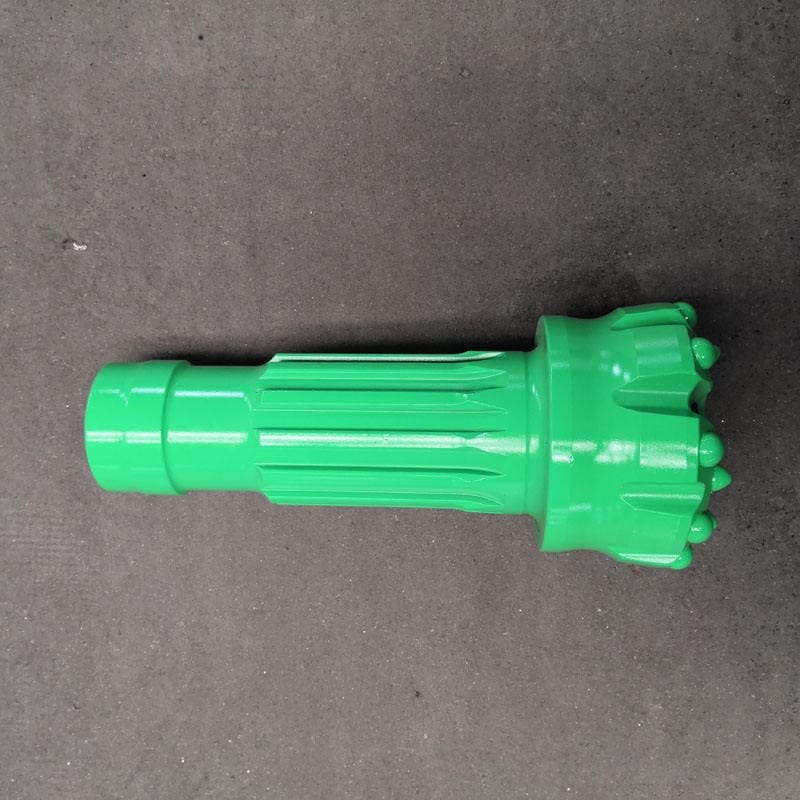
Importance of Material Selection
I remember the first time I had to choose materials for DTH bits11—it felt like deciding the fate of a project. The right materials can mean the difference between seamless operation and frustrating downtime. Typically, we rely on tungsten carbide for the cutting surfaces due to its remarkable hardness and wear resistance. And then there's hardened steel for the bit body, offering that essential balance of toughness and strength.
- Tungsten Carbide: Imagine it as the superhero of materials, enduring abrasion and impact like a pro, keeping those cutting edges sharp even when things get rough.
- Hardened Steel: Think of this as the backbone, handling dynamic forces with grace during drilling.
Performance Analysis
In my experience, evaluating materials under impact testing involves a deep dive into factors like hardness, fracture toughness, and thermal stability. Here's a snapshot comparison:
| Material | Hardness (HV) | Toughness (MPa·m1/2) | Thermal Stability |
|---|---|---|---|
| Tungsten Carbide | 1700-2400 | 7-10 | Excellent |
| Hardened Steel | 500-700 | 15-20 | Good |
Technological Advancements
The innovations in material science are fascinating—like when I first heard about hybrid composite materials blending tungsten carbide12 with metallic alloys. These hybrids boost impact resistance and thermal stability, perfect for high-pressure drilling.
Material Testing & Evaluation
I've seen firsthand how crucial comprehensive impact testing is. It’s all about simulating real-life stresses to assess:
- Abrasion Resistance: How the material withstands wear from abrasive particles.
- Impact Resistance: Its capability to endure repeated shocks.
- Thermal Conductivity: Essential for maintaining integrity under high temperatures.
Material testing labs13 play an indispensable role here, guiding us in making informed material choices for DTH bit production.
Tungsten carbide is used for DTH bit cutting surfaces.True
Tungsten carbide's hardness and wear resistance make it ideal for cutting.
Hardened steel has higher hardness than tungsten carbide.False
Hardened steel's hardness (500-700 HV) is lower than tungsten carbide's.
How does impact testing enhance operational safety in drilling?
Ever wondered how those massive drills in mining and construction keep running smoothly without a hitch? Impact testing is the unsung hero, quietly ensuring safety and efficiency.
Impact testing boosts operational safety in drilling by verifying the strength and reliability of drilling components under intense stress. It identifies weaknesses, leading to safer, more efficient operations.

Understanding Impact Testing in Drilling
I remember the first time I saw a drilling operation up close. The sheer power and precision were mesmerizing. But behind the scenes, it's not just brute force that makes it work; it's science. Impact testing evaluates the toughness and durability of drilling components14. In drilling, materials face extreme stresses. By simulating these conditions in a controlled environment, impact tests predict how these materials will behave in real-world operations.
| Test Type | Purpose |
|---|---|
| Charpy Test | Measures material toughness using a pendulum impactor. |
| Izod Test | Assesses material resilience by striking a notched sample. |
Enhancing Equipment Reliability
When I first started in this industry, the concept of "downtime" was my nightmare. Conducting impact tests on DTH drill bits15 ensures they can withstand repeated impacts without failing. This reliability minimizes downtime and maintains operational efficiency. By identifying potential failure points during testing, manufacturers can improve design and material selection.
Safety Improvements through Material Evaluation
Choosing the right materials, like tungsten carbide for drill bits, is critical. Impact testing provides insights into how materials perform under stress, guiding manufacturers in selecting the best materials16 that enhance safety.
| Material | Characteristic |
|---|---|
| Tungsten Carbide | High hardness and wear resistance. |
| Hardened Steel | Toughness and impact strength. |
Predictive Maintenance and Operational Safety
A close friend once told me about a project delay due to unexpected equipment failure. Since then, I've seen how impact testing contributes to predictive maintenance strategies by identifying wear patterns and potential breakage points. This allows operators to plan maintenance activities proactively, reducing accident risks and equipment failure during drilling operations.
By integrating impact testing results into maintenance schedules, companies ensure equipment is always ready for optimal performance17. This not only enhances safety but also extends the operational lifespan of drilling tools.
Design Optimization for Safety
Data from impact tests inform design optimizations that distribute impact forces more evenly across drill bit surfaces. Engineers use this data to develop designs that mitigate stress concentrations, leading to safer and more durable equipment.
By understanding the stress distribution patterns, designers innovate new geometries and reinforce critical areas, ensuring the equipment withstands extreme conditions without compromising safety.
In summary, impact testing is indispensable for ensuring the durability, reliability, and safety of drilling equipment, providing critical data that drive continuous improvements in operational safety practices.
Impact testing predicts real-world material behavior.True
Impact testing simulates extreme conditions to forecast material performance.
Tungsten carbide is used for its low wear resistance.False
Tungsten carbide is chosen for its high hardness and wear resistance.
How Can Impact Testing Help Predict Performance in Different Geological Conditions?
Ever wondered how we can predict how materials handle different geological challenges?
Impact testing simulates real-world stress on materials, predicting how they perform under various geological conditions. This helps in selecting the right materials and optimizing designs for diverse environments.
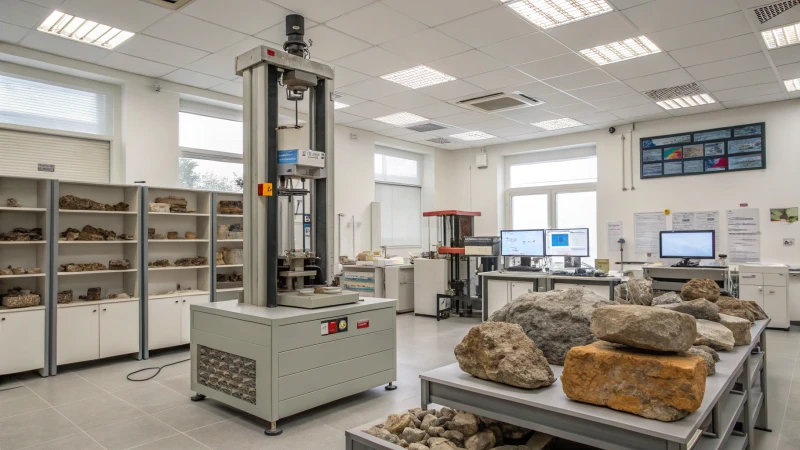
Understanding Impact Testing
Imagine taking a sledgehammer to a rock—only scientifically. That's impact testing. It's like throwing life's curveballs at materials to see how tough they really are. By smacking them with controlled force, I can observe how much energy they absorb and determine their toughness. This process is all about understanding how materials handle unexpected challenges, much like how life sometimes throws us unexpected situations.
Predictive Insights from Impact Testing
Material Toughness
Back in the day, I remember my first project involving hardened steel. It was a construction job, and I learned quickly that not all steel is created equal. Those impact test results showed me why some materials hold up better than others. Materials that ace these tests tend to be tough cookies, making them ideal for surviving the harshest geological environments.
| Material | Impact Toughness | Suitability |
|---|---|---|
| Tungsten Carbide | High | Hard Rock Drilling18 |
| Hardened Steel | Moderate | Construction Projects19 |
Applications in Drilling Operations
In the world of drilling, it's like selecting the right weapon for battle. Impact testing data guides which drill bit materials20 to choose, depending on whether you're facing soft soil or hard rock. I once had to pick a bit for a soft soil project; it was all about finding something with low toughness to avoid excessive wear. On the flip side, when you're tackling hard rock, you need something that won't crumble under pressure—those high-impact resistant materials are lifesavers.
- Soft Soil: Needs lower toughness to prevent unnecessary wear.
- Hard Rock: Demands high-impact resistant materials to endure repetitive stress.
Influence on Material Design and Selection
Impact testing isn't just about today—it's about tomorrow, too. The results help refine material composition, tailoring it for specific geological conditions. Just like tweaking a recipe until it's perfect, material evaluation21 lets manufacturers enhance durability based on these insights.
Challenges and Considerations
Even with the best-laid plans, there are always challenges. While impact testing provides valuable insights, it can't replicate every geological condition. Real-world variability can lead to performance discrepancies. It's kind of like baking at home versus on a cooking show; sometimes things don't turn out exactly as expected.
Factors such as:
- Test Environment: Controlled lab settings vs. real-world variability.
- Material Composition: Variations in alloying elements can affect outcomes.
When applying impact test results to real-world applications22, these considerations are crucial. Understanding these aspects of impact testing can significantly aid in selecting and designing equipment for diverse geological conditions.
Impact testing predicts material performance in all conditions.False
Impact tests can't replicate all geological conditions; discrepancies exist.
Materials with high toughness are suited for hard rock drilling.True
High toughness materials endure repetitive stress in hard rock drilling.
Conclusion
Impact testing is vital for DTH drill bits, ensuring durability, optimizing design, and enhancing safety by simulating real-world stresses to predict performance in various geological conditions.
-
Understanding the importance of reliability in drilling equipment helps minimize downtimes and maintenance costs. ↩
-
Exploring ways to improve safety in drilling operations can reduce risks and enhance productivity. ↩
-
Matching drill bits to specific geological conditions optimizes efficiency and effectiveness in drilling projects. ↩
-
Explores why toughness is critical for materials used in structural applications, highlighting safety and performance benefits. ↩
-
Shows how impact testing contributes to vehicle safety, detailing its role in developing crash-resistant materials. ↩
-
Provides insights into how impact testing data guides engineers in refining product designs for enhanced durability. ↩
-
Discusses how impact testing predicts product longevity, supporting manufacturers in ensuring quality and safety. ↩
-
Composites and alloys provide unique properties like strength and flexibility, making them ideal for impact resistance. ↩
-
Explore how various industries utilize impact testing to enhance product safety and performance. ↩
-
Balancing weight and environmental considerations is crucial for sustainable and efficient designs. ↩
-
Learn more about DTH bits' applications in various industries like mining and construction. ↩
-
Discover why tungsten carbide is preferred for drill bits due to its superior properties. ↩
-
Explore certified labs that specialize in testing materials used in drilling equipment. ↩
-
Explore how impact testing determines equipment resilience under operational stress. ↩
-
Learn about reliability testing methods for DTH drill bits to ensure operational efficiency. ↩
-
Discover which materials enhance drill bit safety and reliability in tough conditions. ↩
-
Understand how predictive maintenance strategies can improve operational safety and efficiency. ↩
-
Discover why tungsten carbide is optimal for drilling in hard rock conditions, offering exceptional durability and strength. ↩
-
Learn which materials are best suited for construction projects, focusing on impact resistance and durability. ↩
-
Explore how impact testing guides the selection of drill bit materials for various applications. ↩
-
Understand the role of impact testing in evaluating and improving material compositions. ↩
-
Gain insights into how impact test results translate to real-world applications and their limitations. ↩

